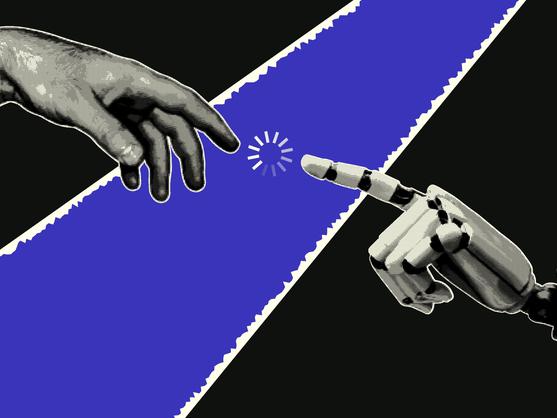
GenAI can help literature students think more critically
Humanities graduates are expected to demonstrate critical thinking skills when navigating the world of work. However, as generative artificial intelligence (GenAI ) use in higher education continues to rise, so do concerns that tools such as ChatGPT are diminishing students’ critical thinking abilities. This resource aims to debunk this idea.
From fear to integration
At the beginning of last semester, I overheard a conversation between two students, one of whom said, “I don’t want to read the entire novel. I’ll just use ChatGPT for the analysis.” This hit me hard as an educator who is passionate about literature. The idea that students were choosing convenience over critical engagement was disappointing and prompted me to ask the head of the department to impose harsher penalties for GenAI use.
Many educators believe tools like ChatGPT offer students a way to cheat, and as such, support either a complete ban or more stringent regulation. Universities are enhancing the use of detection tools and implementing severe penalties to serve as a deterrent.
- Advice on AI and assessment in higher education
- Spotlight guide: Bringing GenAI into the university classroom
- Can academics tell the difference between AI-generated and human-authored content?
It’s reasonable to worry that generative GenAI will impede students’ intellectual growth, particularly when it comes to critical thinking. However, if we are consumed by this fear, we will be blind to its potential. ChatGPT is here to stay. Its functionality will most likely improve, making it even more appealing to students in the months and years to come. That is why we need to shift our focus to look at GenAI as a tool to enhance student engagement, stimulate curiosity and invite students to conduct deeper inquiries.
From shortcuts to critical engagement
A few weeks after hearing my student’s comment, during a tutorial for my English literary and cultural criticism course, I asked others to generate a prompt using ChatGPT in reference to Jane Austin’s Pride and Prejudice. One prompt they used was: “How are gender and power dynamics represented in the novel?” When ChatGPT produced a few interpretations, students were initially impressed. They then engaged in critical dialogue about the AI's responses and, as we continued to discuss them as a class, started to question their depth. Following this, I asked them to think about how we could dig deeper.
This prompted students to discuss how to achieve a more comprehensive analysis, bearing in mind the fact that ChatGPT’s response had not sufficiently addressed the complexity of the protagonist’s internal conflict caused by the clash between society’s expectations of her and her own desires. During that class, we demonstrated GenAI’s power as a discussion starter rather than a shortcut.
Another way to help students use GenAI to improve their critical thinking is to guide students to assess the reliability and biases of AI-generated responses, a skill that is especially useful in an era of (mis)information overload. To facilitate this, I prompted ChatGPT to provide an analysis of female independence, one of the novel’s main themes. The prompt I used was: “Discuss how Pride and Prejudice appears to champion female independence but ultimately reinforces traditional gender roles and societal expectations when Elizabeth decides to marry Mr Darcy to provide her family with financial security.” I then asked students to write a rebuttal based on the response.
Another exercise involves asking ChatGPT to generate two sides to an argument. For instance, ask ChatGPT: “Provide two contrasting arguments: one that highlights how Elizabeth in Pride and Prejudice asserts her independence, and another that emphasises how she remains reliant on others due to the constraints of societal expectations.” After that, students must assess both arguments and select one side. They then write an essay outlining their points of agreement and disagreement.
Guiding students away from using ChatGPT as a shortcut can create a sense of agency and empower them to engage with technology in a way that allows them to take ownership of their learning. It can also help them recognise that contributing original thought and creativity is more important than merely saving time. Classroom activities should aim to assist students in assessing how they can deepen their learning using GenAI. This way, it stops being a tool that sparks concern, and instead becomes a powerful learning partner, ultimately making us and our students better critical thinkers.
Shuri Mariasih Gietty Tambunan is a lecturer in the English studies programme at the University of Indonesia’s faculty of humanities.
If you would like advice and insight from academics and university staff delivered direct to your inbox each week, sign up for the Campus newsletter.



